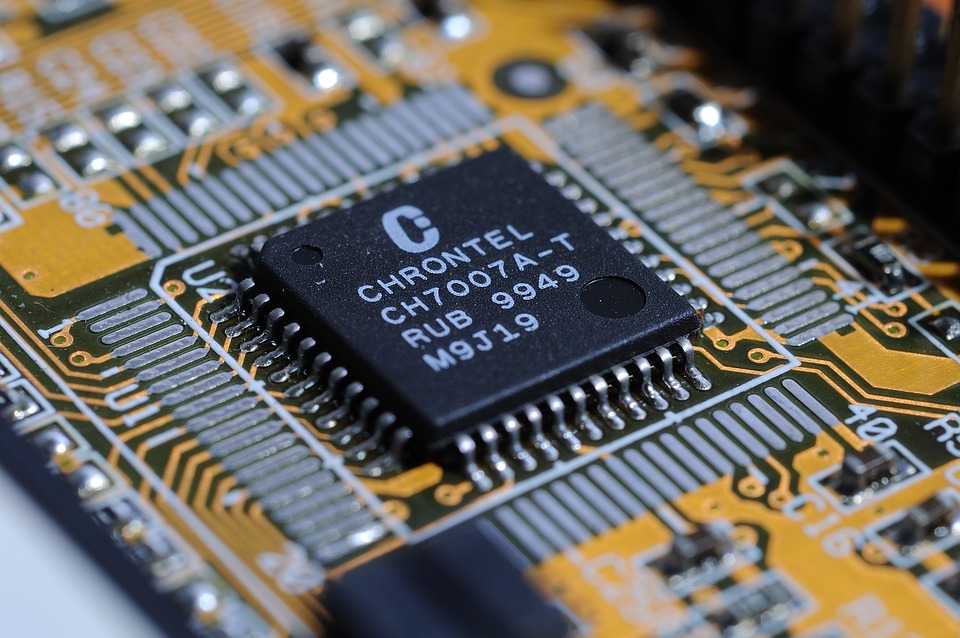Below is an analysis of the current status of China’s exports of automatic data-processing machine parts and components to Japan and South Korea, along with a complete end-to-end export guide:
Current Status and Market Analysis of Exports to Japan and South Korea
1. Export Scale and Competitive Landscape
日本市場: In 2023, China’s exports of automatic data-processing machine parts and accessories (HS code: 8473.30) to Japan reached US$3.86 billion, accounting for 32% of Japan’s import share. The main products include server thermal modules, storage device connectors, and PCB substrates. The core competitors are Taiwan (25%) and Vietnam (15%).
South Korean market: In 2023, exports to South Korea reached USD 2.24 billion, up 14% year-on-year, led by semiconductor packaging materials and 5G communication modules. Chinese products now hold a 26% share of the Korean market, second only to domestic Korean firms at 45%.
2. Growth Drivers
Data Center Construction Boom: Surging cloud-computing investments in Japan and South Korea propel Japan’s data-center market past USD 12 billion in 2023.
Supply chain complementarity: China’s costs in precision metalworking and electronic components are 30–50% lower than those of Japan and South Korea.
RCEP Dividends: After the agreement takes effect, the tariff on Chinese server components exported to Japan will drop from 3% to 0%, and the tariff on Chinese semiconductor materials exported to South Korea will be phased out from 5%.

Export Procedures and Core Documents
1. Standard Export Procedure
Order Confirmation: Enter into a contract that incorporates the Incoterms? 2020 rules (FOB or CIF is recommended).
Production stock preparation: Quality inspection conducted according to JIS (Japan) / KS (Korea) standards.
輸出申告:中國稅関への通関申告書の提出(機器の用途コードを明記すること、例:日本の用途コード「OA-3」)。
物流輸送:
- Japan: Shanghai/Qingdao Port to Tokyo/Osaka Port, sea freight 3–5 days;
- South Korea: Weihai/Lianyungang to Incheon Port, 1–2 days by sea.
Customs clearance in the destination country: File electronically through Japan’s NACCS system or Korea’s UNI-PASS system.
2. Required Documents
Basic Documents: Commercial Invoice (Chinese-Japanese / Chinese-Korean bilingual), Packing List, Bill of Lading, Certificate of Origin (RCEP or CO).
Special file:
- Japan: PSE Certificate (live parts), Declaration of Non-Use of Radioactive Substances (lead-containing solder must be provided if applicable).
- South Korea: KC Certification (Wireless Communication Module), Import Clearance Number (requires advance application by the Korean buyer).
Japanese and Korean Technical Regulations and Certification Systems
1. Key Compliance Points in Japan
PSE認証:
- Applicable Products: Power modules, motor-cooled heat sinks, and other live components.
- Certification mark: Circle PSE (for non-specified products) or Diamond PSE (for 100 V AC products).
J-MOSS Directive: Restrict six categories of hazardous substances such as cadmium and lead; a third-party test report (e.g., UL Japan) must be provided.
Metrology Law Certification: Sensors for precision measuring instruments must be calibrated by the National Metrology Institute of Japan (NMIJ).
2. Key Compliance Points for South Korea
KC Certification:
- Applicable products: 5G RF modules, electromagnetic compatibility (EMC) sensitive components.
- Certification Process: Korea Laboratory Testing (KTL/KTR) → Factory Inspection → Certificate Issued (Lead Time: 4–8 Months).
K-REACH: Implement a pre-registration system for the chemical substances in server coolants and solder pastes.
Information Security Certification: The storage device controller must comply with the encryption standards set by the Korea Internet & Security Agency (KISA).

Packaging and Labeling Standards
1. General Requirements
Anti-static packaging: Precision chip components must be placed in silver anti-static bags with a surface resistance ≤10^12 Ω.
Seismic Design: EPE pearl cotton layered isolation, single-box load-bearing ≤20 kg (compliant with Japanese and Korean manual handling standards).
環境マーク: The outer carton must be printed with the recycling mark (JP: リサイクルマーク / KR: ?????).
2. Differentiation Requirements
Japan:
- Mandatory voltage and frequency labeling (100 V / 50–60 Hz).
- Lithium battery components must be affixed with a "リチウム電池內蔵" warning label.
South Korea:
- Korean label must include the manufacturer's address and customer service phone number (area code +82 required).
- Electromagnetic-sensitive components must be labeled with the "?????" mark.
Speedrun Secrets
1. Pre-declaration System Application
Japan: By submitting the electronic manifest 72 hours in advance through the "NACCS system," Tokyo Customs can achieve an ultra-fast 4-hour release.
South Korea: Using the UNI-PASS pre-clearance feature, the average customs clearance time at Incheon Port has been reduced to 2 hours.
2. Tariff Optimization Plan
Leveraging RCEP Rules:
- Apply for the RCEP Certificate of Origin (Customs Code: RCEP5), with Japan's tariff reduced to zero and Korea's tariff reduced by 50%.
- When calculating the Regional Value Content (RVC), the processing operations performed in Japan and South Korea may be counted under the accumulation rule.
Bonded logistics network:
- Japan: Carry out simple assembly in the Fukuoka bonded warehouse to circumvent the high import tariffs on finished goods.
- South Korea: Utilize the Busan Free Economic Zone (FEZ) for testing and distribution to save on value-added tax.
3. Preferred Logistics Channels
Japan Express:
- Shanghai → Osaka “China-Japan E-commerce Express”, 3 sailings per week, 5-day transit.
- Shenzhen Yantian → Tokyo “Precision Equipment Express,” offering temperature-controlled container service.
Korea Land-Sea Intermodal Transport:
- Weihai → Incheon “Overnight Ro-Ro Ferry,” depart at dusk and arrive at dawn.
- China Railway Express + Korean Railway: Chongqing → Alashankou → Busan, total transit time 12 days (7 days faster than pure ocean freight).

Future Trends and Recommendations
- Technology Upgrade: Demand for liquid-cooled servers and AI chip substrates has surged in Japan and South Korea; it is recommended to intensify R&D on high value-added products.
- Compliance First: Proactively establish a material traceability system in anticipation of South Korea’s Special Act on the Semiconductor Industry, set to take effect in 2024.
- Digital empowerment: Leverage blockchain technology to enable one-click access to the "three certificates"—customs declarations, certificates of origin, and quality inspection reports.
Finally, whenever you need agency services or any other support in export trade, feel free to contact Zongdaifu. We are committed to providing comprehensive one-stop agency services—including export customs clearance, commodity inspection, logistics, tax rebates, and more—so you can save time and effort and enjoy a smooth, stress-free export experience.


 カスタマーサービスWeChatをフォローしてください
カスタマーサービスWeChatをフォローしてください